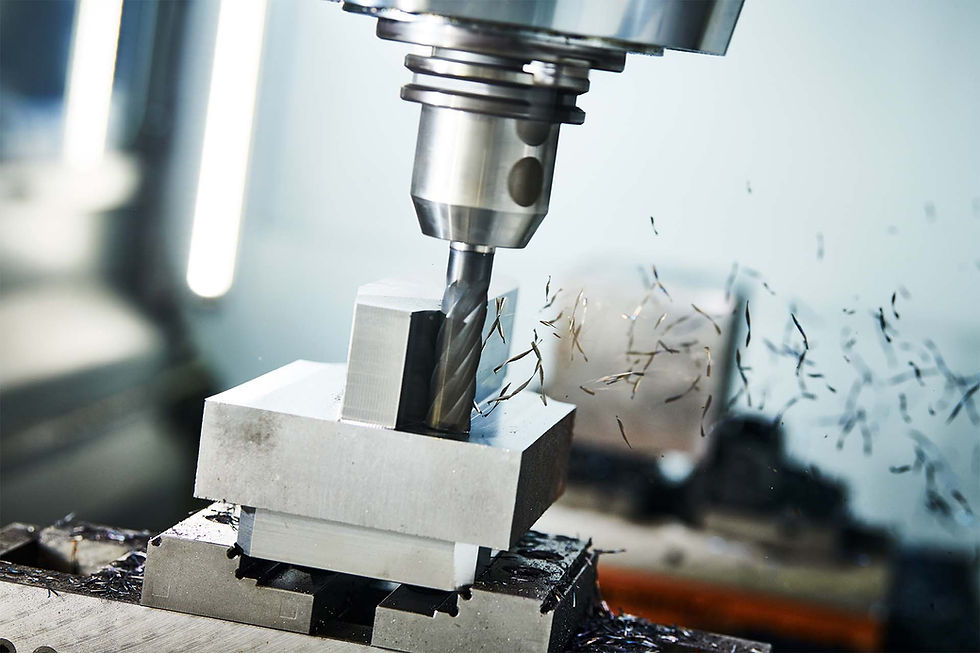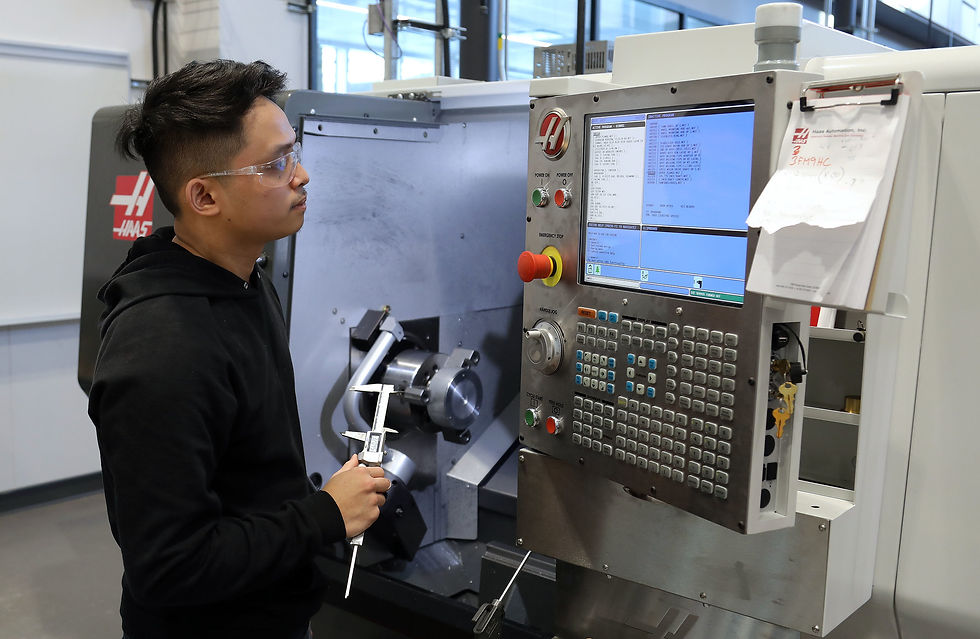The Science of Cutting Forces in CNC Machining
- Calvin Wu
- Apr 30, 2023
- 3 min read
Outline:
Introduction to Cutting Forces in CNC Machining
Overview of cutting forces
Importance of understanding cutting forces
Types of Cutting Forces in CNC Machining
Primary forces: Tangential, radial, and axial forces
Secondary forces: Friction and ploughing forces
Factors Influencing Cutting Forces
Cutting tool geometry
Cutting speed, feed rate, and depth of cut
Material properties
Machine rigidity
Impact of Cutting Forces on CNC Machining
Tool life and wear
Surface finish and dimensional accuracy
Machine stability and vibrations
Strategies for Optimizing Cutting Forces in CNC Machining
Proper tool selection and geometry
Adjusting cutting parameters
Utilizing effective coolant application
Ensuring machine rigidity and stability
Conclusion
Recap of key points
Importance of optimizing cutting forces in CNC machining
The Science of Cutting Forces in CNC Machining

Introduction to Cutting Forces in CNC Machining
Cutting forces play a crucial role in CNC machining, directly influencing tool life, material removal rate, and overall performance. Understanding the science behind cutting forces is essential for optimizing machining processes and achieving the desired outcomes. In this article, we will explore the types of cutting forces, factors influencing them, and strategies for optimization.
Types of Cutting Forces in CNC Machining

There are two main categories of cutting forces in CNC machining:
Primary forces: These include tangential (cutting) force, radial (thrust) force, and axial (feed) force. These forces are a result of the direct interaction between the cutting tool and the workpiece.
Secondary forces: These consist of friction and ploughing forces that occur due to the rubbing of the tool flank against the workpiece and the deformation of the workpiece material.
Factors Influencing Cutting Forces

Several factors contribute to the magnitude and direction of cutting forces in CNC machining:
Cutting tool geometry: The rake angle, clearance angle, and cutting edge radius significantly impact cutting forces.
Cutting speed, feed rate, and depth of cut: Higher cutting speeds, feed rates, and depths of cut typically result in increased cutting forces.
Material properties: The workpiece material's hardness, ductility, and strength influence the cutting forces encountered during machining.
Machine rigidity: The rigidity and stability of the CNC machine affect the distribution and impact of cutting forces.
Impact of Cutting Forces on CNC Machining

Cutting forces have several implications on the CNC machining process:
Tool life and wear: High cutting forces can cause increased tool wear, reducing tool life and affecting performance.
Surface finish and dimensional accuracy: Excessive cutting forces can lead to tool deflection, resulting in poor surface finish and compromised dimensional accuracy.
Machine stability and vibrations: Uncontrolled cutting forces can induce vibrations and compromise machine stability, further affecting the quality of the finished product.
Strategies for Optimizing Cutting Forces in CNC Machining

To optimize cutting forces and improve CNC machining performance, consider these strategies:
Proper tool selection and geometry: Choose the right cutting tool for the material and application, paying close attention to rake angles, clearance angles, and cutting edge radii.
Adjusting cutting parameters: Fine-tune cutting speeds, feed rates, and depths of cut to balance material removal rates, tool life, and cutting forces.
Utilizing effective coolant application: Use appropriate coolants and lubricants to reduce friction, minimize heat generation, and improve overall cutting performance.
Ensuring machine rigidity and stability: Maintain a rigid and stable CNC machine setup to better control cutting forces and minimize vibrations.
Conclusion
Understanding the science behind cutting forces in CNC machining is essential for optimizing processes and achieving high-quality outcomes. By considering the types of cutting forces, the factors influencing them, and implementing strategies to optimize their impact, you can improve tool life, surface finish, and overall machining performance. By continuously analyzing and adjusting cutting forces, you will ensure a more efficient and effective CNC machining process.



Comments